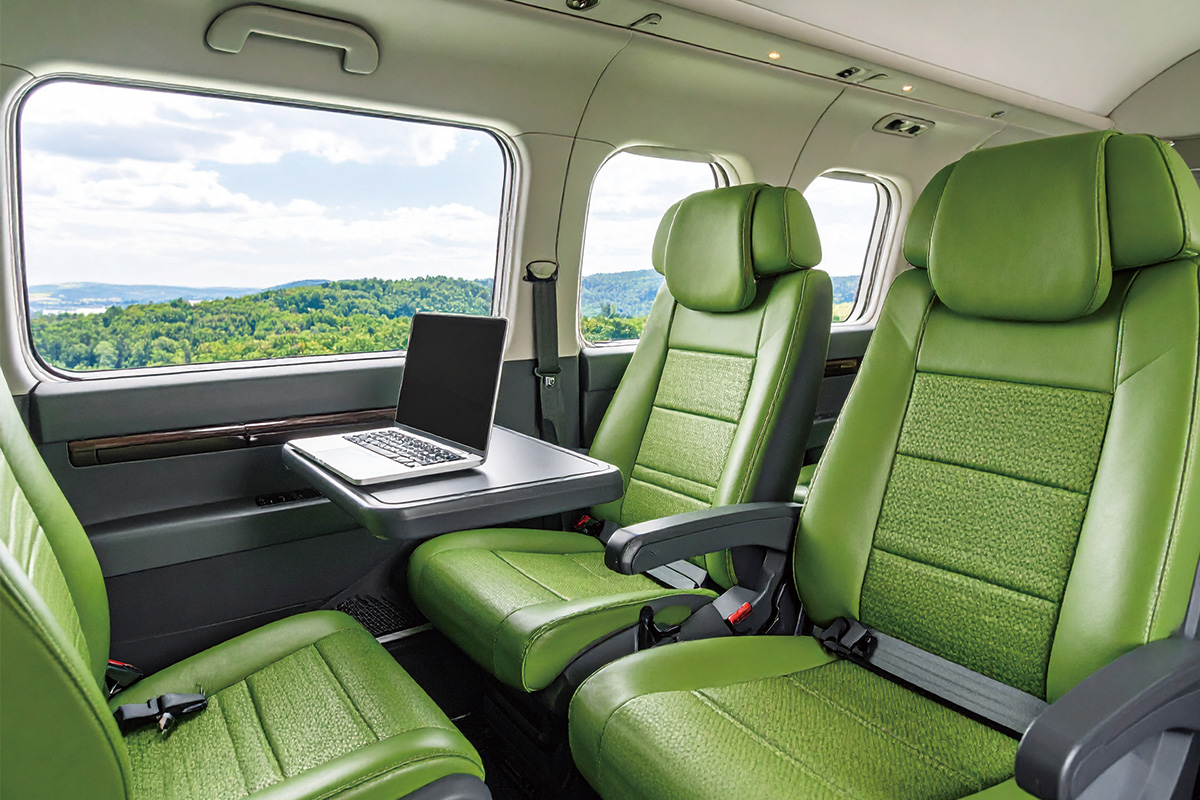The Productive Commute: Redefining “Too Far” in the Age of the Green Car
The prevailing wisdom for life in Tokyo is a simple, gravitational one: pull in as close to the center as you can afford. The ideal, we’re told, is a compact apartment within the comforting loop of the Yamanote Line, or perhaps a short, direct train ride away in a desirable ward. The commute is a beast to be tamed, a daily tax on our time and sanity to be minimized at all costs. From this perspective, the idea of living an hour, or even two, from the city center seems like a willful act of self-punishment. It’s a narrative that champions proximity over all else, one that’s so dominant we rarely stop to question its core assumptions.
But what if the metric we’re using—sheer duration—is wrong? What if the quality of that commuting time is infinitely more valuable than its length? The article “Benefits of Long Commutes Beyond Japan’s Suburbs” rightly prods at this ingrained belief, suggesting that a longer journey can be a feature, not a bug. From a specifically ex-urban, train-focused point of view, this isn’t just a contrarian take; it’s the key to unlocking a lifestyle that most Tokyoites, fixated on the perceived inconvenience of distance, never even consider. It’s a lifestyle that trades the frantic, cramped inefficiency of a short, standing-room-only crush for the serene, focused productivity of a long, seated journey. It’s about understanding that not all commutes are created equal, and that the right kind of long commute can be the most valuable part of your workday.
This is a conversation that moves beyond the typical suburban sprawl and into the realm of true ex-urban living—places where the rhythm of life is dictated not by the subway map, but by the timetable of a long-distance train, the whisper of a Green Car or even the flight schedule of a regional airline. It’s for those who understand that two hours of uninterrupted work in a comfortable seat with a view is more productive than thirty minutes clinging to a strap in a packed carriage, followed by another thirty trying to find a quiet corner in a noisy office.
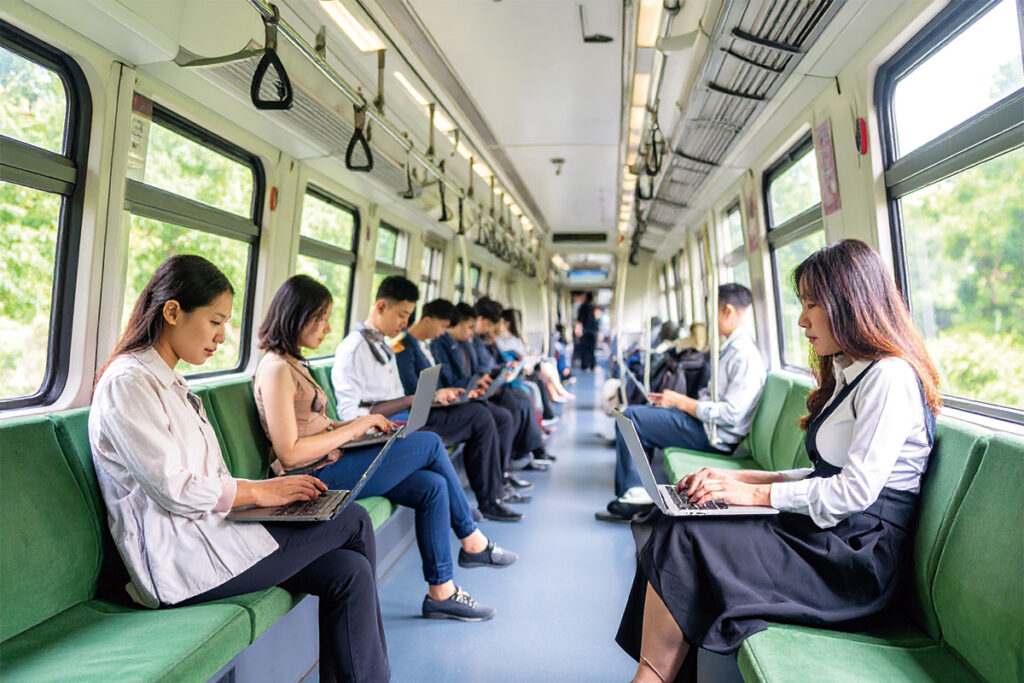
The Chuo Line Transformation: From Endurance Test to Mobile Office
For decades, the Chuo Line has been a lifeline for millions, funneling commuters from the western suburbs into the heart of Tokyo. A commute from a city such as Ōme, nestled against the mountains and rich with immediate access to stunning nature, has always hovered around the one-hour mark. On paper, this sounds perfectly acceptable by Tokyo standards. The reality, however, was for a long time a grueling test of endurance. That hour was almost certainly spent standing, packed shoulder-to-shoulder in a carriage that was too hot in summer and too stuffy in winter. The train would lurch and stall, and while you might manage to tap out a few emails on your phone, any meaningful work was impossible. You weren’t commuting; you were surviving. The primary goal was simply to get through it.
This experience colored the perception of places such as Ōme. It was beautiful, yes, but the daily price of admission was steep. The commute was a sunk cost, a dead hour at the beginning and end of each day that had to be written off.
This calculus is now undergoing a seismic shift with the phased introduction of Green Car services on the Chuo Line. The addition of these double-decker, reserved-seating carriages fundamentally transforms the nature of the journey. Suddenly that one-hour commute is no longer a period of discomfort to be endured, but a block of productive time to be utilized. A guaranteed seat, a tray table for your laptop, power outlets and a quieter, more spacious environment turn the train into a mobile office.
With this single infrastructural upgrade, the equation flips. That hour from Ōme is no longer lost time. It’s an hour of focused work, of clearing your inbox before you even step into the office, of writing reports or simply of quiet contemplation while the landscape transitions from mountain greenery to urban density. The commute becomes a buffer, a structured and productive transition between home life and work life. Consequently, the appeal of Ōme skyrockets. The immediate access to hiking, river sports and a more relaxed pace of life is no longer burdened by a punishing daily journey. The Green Car makes the ex-urban dream a practical reality, proving that the quality of that one hour is far more important than the fact that it is, indeed, an hour long.
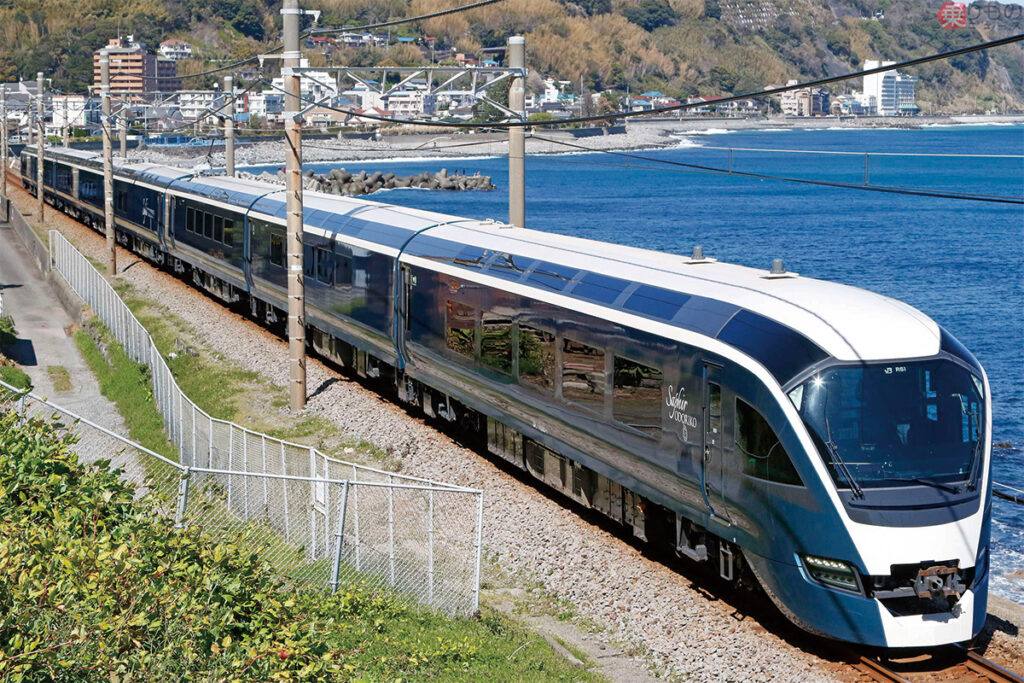
The Two-Hour “Deep Work” Session from the Coast
Pushing the boundary further, consider the coastal town of Yugawara in Kanagawa, perched on the edge of the Izu Peninsula. A local train on the Tōkaidō Line from Yugawara to Tokyo Station takes nearly two hours. To the city-dweller, this sounds like an impossible, almost laughable commute. Two hours, twice a day? It’s dismissed out of hand.
But again, this is a judgment based on the wrong metrics. The Tōkaidō Line, much like the Chuo, features Green Cars. For the price of a ticket that is still a fraction of a monthly rent increase in central Tokyo, that two-hour journey becomes a sanctuary for productivity. Armed with a laptop and a mobile Wi-Fi router, a commuter from Yugawara can settle in for a session of what Cal Newport calls “deep work.”
This is two uninterrupted hours. There are no colleagues stopping by your desk, no pointless meetings, no office chatter, no domestic distractions. It’s a quiet, climate-controlled bubble moving through the scenic countryside. You can accomplish more in those two hours than in half a day at a bustling open-plan office. The journey ceases to be a commute in the traditional sense and becomes a core part of the workday itself. By the time you arrive in Tokyo, you’ve already completed a significant chunk of your most demanding tasks. The return journey offers the same opportunity, allowing you to wrap up your day and arrive home with your work truly finished.
Living in Yugawara means weekends by the sea, access to onsen and a quality of life utterly disconnected from the concrete confines of the city. The two-hour train ride isn’t the price you pay for this; it’s the enabler. It’s the productive “third space” that makes the entire lifestyle possible.

The Island Commute: An Extreme Case for a New Flexibility
To truly stretch the concept, let’s look at an extreme example: Hachijōjima. This subtropical volcanic island is part of the Izu archipelago, administered by Tokyo but floating 287 kilometers south in the Pacific Ocean. A daily commute sounds absurd, and for a traditional five-day-a-week office job, it probably is. But in an age of increasing work flexibility, it’s an idea that deserves serious consideration.
A flight from Hachijōjima Airport to Haneda Airport takes a mere 55 minutes. From Haneda, it’s another 30-40 minutes to a central hub such as Omotesandō or Shinjuku. The total door-to-door travel time can be under two hours—comparable to the train from Yugawara. While the cost of daily flights is prohibitive for someone on a hybrid schedule—needing to be in the office only one or two days a week—the numbers start to look very different.
The lifestyle trade-off is immense. You could spend the majority of your week on a lush island famous for its diving, hiking and unique culture, then fly into the city for your required face-to-face meetings. The flight itself, short and direct, becomes a unique form of transition. It’s a powerful mental reset, a definitive shift between two vastly different worlds. This isn’t a lifestyle for everyone, but for the growing class of knowledge workers and creatives with location independence, it highlights how radically we can redefine our relationship with the metropolis if we dare to think beyond the train lines.
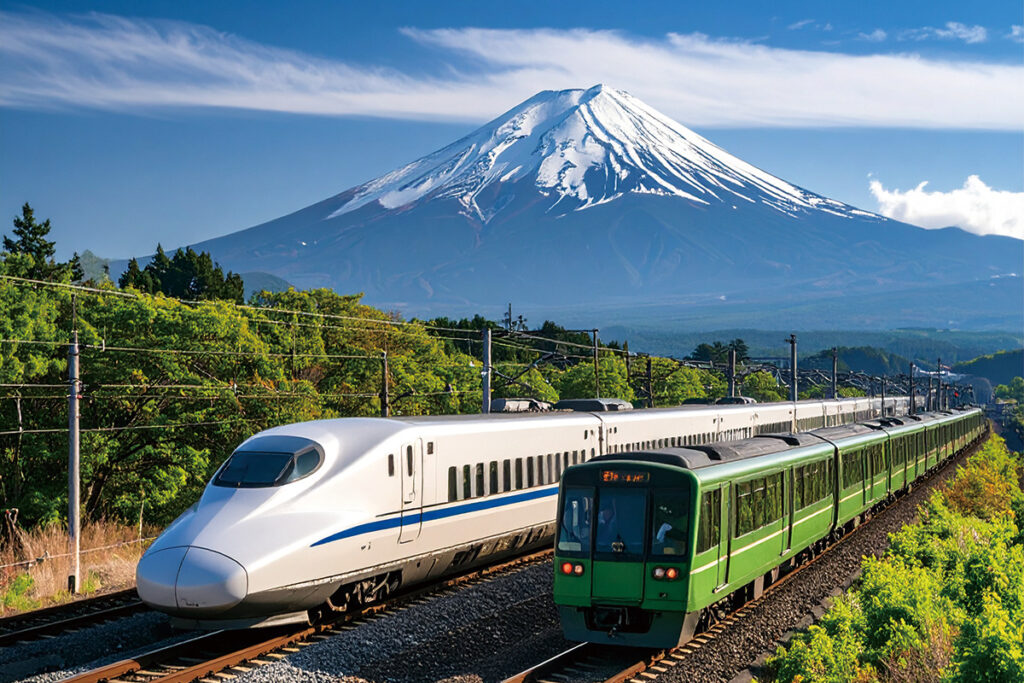
The Time-Dilation Effect: When Slower is Better
This advocacy for the long commute comes with a critical caveat: not all long-distance travel is created equal, and faster is not always better. Premium services such as the Shinkansen or Limited Express trains seem like the ultimate solution for the super-commuter, but they can be deceptively inefficient for productive work if the journey is too short.
Take Odawara or even Takasaki. The Shinkansen journey from either to Tokyo is a blistering 35-50 minutes. It’s simply too short. By the time you’ve taken your seat, opened your laptop, connected to Wi-Fi and gathered your thoughts, you’re already preparing for arrival. It’s not enough time to sink into a state of deep focus. In these cases, you’re often better off embracing the slower, local-line option if it offers a Green Car. The nearly two-hour ride from Takasaki on the Takasaki line, for instance, provides a proper, usable block of uninterrupted time, much like the journey from Yugawara. I would rather have two hours of settled, productive work than a frantic 40 minutes of merely getting set up.
For a premium, high-speed service to make sense from a productivity standpoint, the journey needs to hit a “sweet spot.” This is where cities such as Shizuoka or Yamanashi come into play. A trip from Shizuoka City to Tokyo Station on the Hikari Shinkansen takes about 80 minutes. Similarly, the Kaiji Limited Express connects Yamanashi City to Shinjuku in about the same amount of time. This duration is ideal. It’s long enough to constitute a solid, uninterrupted work session, but still feels remarkably swift. Living in these regional hubs offers a “best of both worlds” scenario: the affordability and amenities of a significant city, with the powerhouse of Tokyo just an hour-and-a-half away. The Shinkansen or Limited Express pass becomes your ticket to a lifestyle that combines regional comfort with metropolitan opportunity, all underwritten by a commute that is both swift and genuinely productive.
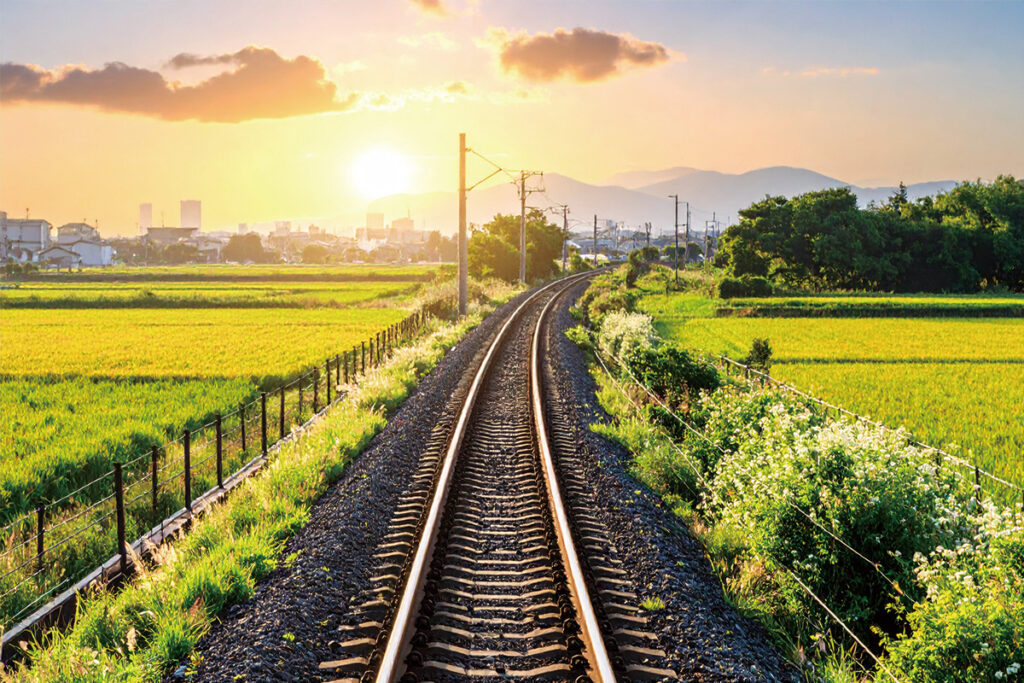
Ultimately, the conversation about where to live in relation to Tokyo needs to be reframed and expanded. The default choice of living as close to downtown as possible is a perfectly valid one, but it has dominated the discussion for so long that it often feels like the only choice. We are too obsessed with the simple, misleading metric of time, and we fail to account for the quality and utility of that time. The conversation needs to broaden beyond mere proximity to include the value of a productive journey, the benefits of a life connected to nature and the sheer pleasure of a quiet moment to think.
By viewing the commute not as a burden to be minimized but as an opportunity to be maximized, we open up a vast map of possibilities. The quiet focus of a Green Car or the swift efficiency of a well-timed Shinkansen can transform travel time into some of the most productive hours of the day. This shift in perspective allows us to see places like Ōme, Yugawara and even Hachijōjima not as remote outposts, but as viable, desirable places to build a life—a life where the journey itself is an integral and valuable part of the destination.

